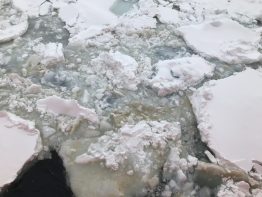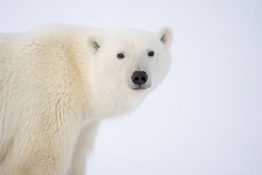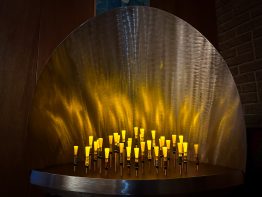In the frigid waters surrounding Antarctica, an unusual seasonal cycle occurs. During winter, from March to October, the sun barely rises. As seawater freezes it rejects salts, creating pockets of extra-salty brine where microbes live in winter. In summer, the sea ice melts under constant daylight, producing warmer, fresher water at the surface. This remote ecosystem is home to much of the Southern Ocean’s photosynthetic life.
Read more at UW News »UW a lead partner on new NSF-funded earthquake research center
The University of Washington is a lead partner on a new multi-institution earthquake research center based at the University of Oregon that the National Science Foundation announced Sept. 8 will receive $15 million over five years to study the Cascadia subduction zone and bolster earthquake preparedness in the Pacific Northwest and beyond. The Cascadia Region Earthquake Science Center, or CRESCENT, will be the first center of its kind in the nation focused on earthquakes at subduction zones, where one tectonic plate slides beneath another.
Read more at UW News »Study connects greenhouse gas emissions to polar bear population declines, enabling greater protections under Endangered Species Act
New research from the University of Washington and Polar Bears International in Bozeman, Montana, quantifies the relationship between greenhouse gas emissions and the survival of polar bear populations. The paper, published online Aug. 31 in Science, combines past research and new analysis to provide a quantitative link between greenhouse gas emissions and polar bear survival rates. A warming Arctic is limiting polar bears’ access to sea ice, which the bears use as a hunting platform.
Read more at UW News »A Q&A with Corey Garza, UW Environment Associate Dean for Diversity, Equity and Inclusion
Corey Garza begins his tenure as the UW College of the Environment Associate Dean for Diversity, Equity and Inclusion, and as a Professor of Aquatic and Fishery Sciences effective September 1. We sat down with Garza to talk about the vision for his new role, his approach to advancing equity and inclusion, and what he ultimately hopes to achieve. What appeals to you most about coming to the College of the Environment to lead DEI efforts?
Read more »The art and science of Dale Durran
While most of his days are spent unraveling the intricacies of weather patterns and atmospheric dynamics, Professor of Atmospheric Sciences Dale Durran has embraced metal work to express his passion for the natural world. With a curiosity that reaches far beyond the confines of the laboratory, Durran crafts works that infuse the interplay of science and creativity into each unique piece.
Read more »





